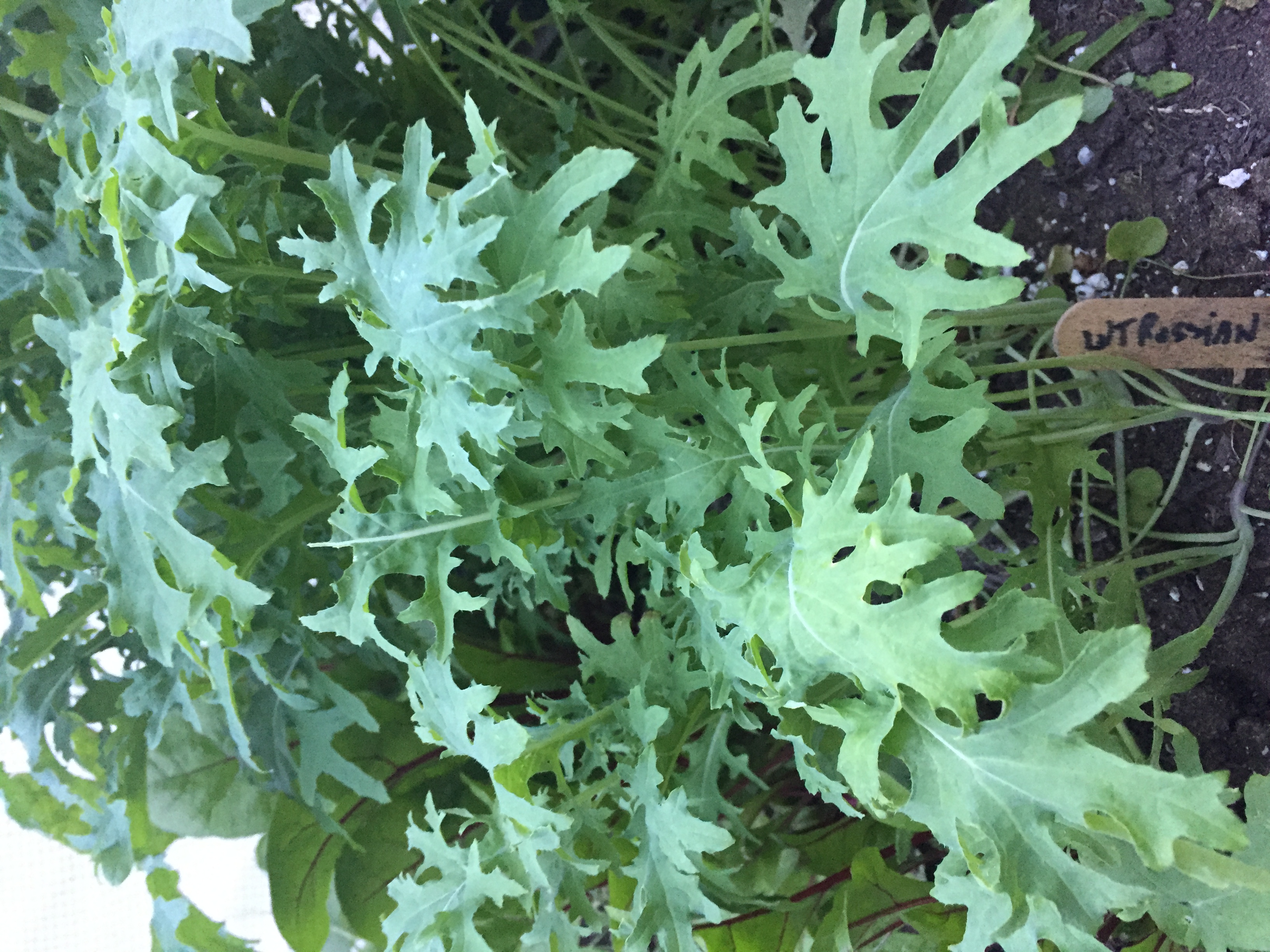BC Master Gardener, Sharon Hanna has authored two books about Kale. I am going to share some of what she has to say in her first book The Book of Kale: The Easy-To- Grow Superfood.
Sharon maintains that kale is an ancient superfood. It is easy to grow for novice gardeners and experienced gardeners alike.
Why should we consider growing our own kale? Freshly harvested greens from our gardens provides us with the most nutritious greens possible.
To grow kale you need at least 6 hours of sun a day, preferably midday sun. Kale likes high quality soil composted with organic matter, once or twice a year. The rain will take care of kale’s water needs unless of course you are growing it in a container or on a balcony. In that case additional water may be necessary.
Sow seeds approximately 3 times deeper than the size of the seed, taking care not to crowd the seeds when you sow them. Kale seeds germinate in about 4 or 5 days if the soil is warm, longer in cooler conditions.
You can begin to harvet your kale when it is about 4 inches tall, using sharp scissors. Use the greens for salad or garnish. Be sure to leave at least 2 inches of stem so that the kale can regrow.
You will have to thin your kale plants in order to have it produce large leaves like those you buy in the store. Eventually the plants need 18 to 24 inchesaround them to become big healthy plants.
Your kale will eventually flower. The flowers are delicious in salad. The bees love them too. Sharon always tells people to “leave some of the flowers for the bees”.
Try leaving your kale plants in the garden over the winter. You may be rewarded in early spring with some new leaves sprouting. They will be delicious and tender having gone through the winter.
Kale is relatively pest free, but can be infested with aphids. Give the plant a good blast with your hose or in some cases I have cut the plant right back, put the whole thing into the landfill garbage and then waited for the plant to resprout. In most cases, it comes back aphid free.
In her book, Sharon discusses varieties of kale to grow. There is Red Russian, Curly, Rainbow Tuscan, Winter Bor, Ripbor, and Redbor. The list goes on. Preference is up to you. Personally, I like to grow two or three different varieties.
Sharon goes on to discuss how to cook with kale. I have tried many of her recipes. Everyone has been delicious. I will share with you, the recipe that I have found most useful and delicious.
Simple Kale Frittata
2 eggs
1/4 cup of water
salt and pepper to taste
2 tsp of butter
finely chopped onion
garlic (chopped)
1 cup of kale leaves (chiffonade)
1/4 cup grated cheese – Asiago, Cheddar, Jarlsbrg or your favorite
Whisk eggs in a small bowl with water, salt and pepper until light.
In a non-stick frying pan, heat oil or butter over medium heat. Add onions and saute until slightly softened, 1 or 2 minutes. Add garlic and kale. Continue to stir and cook 5 minutes – kale should be wilted but still bright green.
Add egg mixture to the pan and turn heat to medium-low. Allow eggs to cook to desired degree of firmness. If you are an expert at flipping, flip the kale/egg mixture (it’s good to have an audience for this). When eggs are almost cooked to your liking, add the cheese. Serve hot or warm. Pg. 65.
Sharon has authored a second book, The Book of Kale and Friends, 2013. It is an equally informative book which discusses not only more about kale but kale’s friends herbs! There are tons more recipes and lots more nutritious information.
Hanna, Sharon, The Book of Kale: The Easy-To-Grow Superfood, Harbour Publishing Co. Ltd. 2012.

